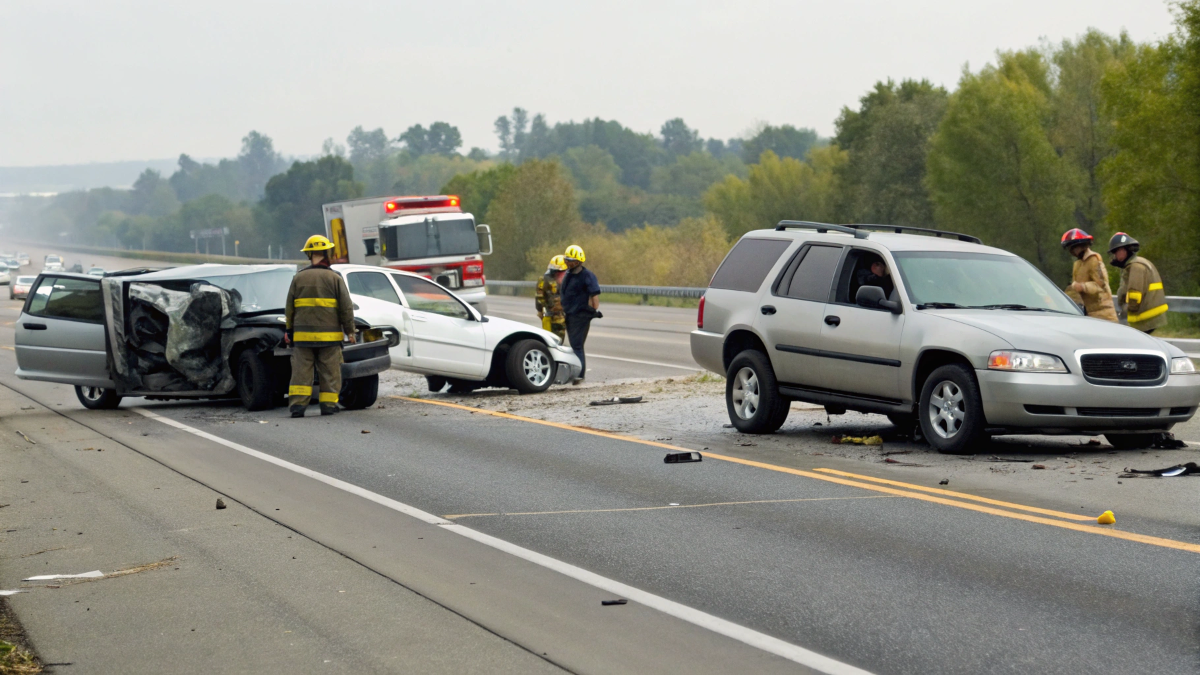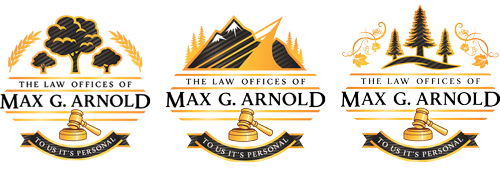
What To Do After a Car Accident in California
10 Essential Steps to Take After a Car Accident in California
Getting in a crash is jarring—your heart’s racing, your brain’s foggy, and your phone is suddenly at 2% battery. In that swirl of adrenaline, it helps to have a simple, California-specific game plan for what to do after a car accident in California. Below is a clear, down-to-earth guide you can follow from the moment you pull over to the days and weeks that follow. Print it, save it, or share it—just know you’ve got a roadmap.
1) Check for injuries, call 911, and stop—every time
First things first: check yourself and your passengers for injuries. If anyone is hurt, call 911 immediately. California law requires you to stop after any collision—don’t drive away, even if the damage seems minor. For property-damage-only crashes, you should stop at the nearest spot that won’t block traffic and is safe for everyone involved (for example, the shoulder). Moving the car to safety doesn’t affect questions of fault, and CHP specifically encourages getting out of live lanes when possible.
If injuries are involved, you must also provide your information and render reasonable aid. In injury or death situations, drivers have specific duties to identify themselves to others and to officers; failing to do so can carry serious penalties.
Pro tip: If your vehicle is operable and no one is seriously hurt, activate your hazards and carefully move to a safe spot to prevent a secondary crash.
2) Make the scene safe and start documenting
Once you’re in a secure location, make the area visible—hazards on, flares or reflectors if you have them. Then start gathering evidence:
- Photos and short video clips: vehicle positions (if still in place), close-ups of damage, skid marks, debris, road conditions, traffic control signs, and the broader area from multiple angles.
- Witness names and contact info (even one neutral witness can be a big deal).
- Dashcam footage—save it before it overwrites.
- Note weather, lighting, and anything unusual (construction, potholes, a missing stop sign).
California law also requires drivers to exchange information—names, addresses, driver’s license number, vehicle identification number (VIN), registered owner’s address, and proof of financial responsibility (insurance). If you’re physically unable, you’re excused from the exchange until you’re able; otherwise, you must provide it. Snap photos of the other driver’s license, insurance card, and license plate if they’re willing.
3) Call the police (or CHP) when required—and know the 24-hour rule
If anyone is injured or there is a fatality, California law requires a written report to police or the California Highway Patrol (CHP) within 24 hours. If officers respond to the scene, they typically document this for you, but if no officer arrives, you’re still on the hook to report it.
Later, you (or your lawyer) may want a copy of the official collision report. If CHP handled the crash, you can request it by mail or in person using CHP Form 190 as a “party of interest.” The agency has step-by-step instructions online.
Pro tip: When speaking with officers, stick to the facts—who, where, when, conditions—and avoid speculating about fault.
4) File the DMV SR-1 within 10 days if the crash is “reportable”
Separate from the police/CHP report, California requires an SR-1 accident report to the DMV within 10 days if anyone was injured (even minor injuries), someone died, or there’s $1,000+ in property damage. This is true regardless of fault and in addition to any police report or insurance claim. You (or your insurer/attorney) can file it online. Missing this deadline can create licensing and insurance headaches you don’t need.
5) Get medical care early—and track everything
Even “minor” collisions can cause delayed-onset injuries (concussions, whiplash, soft-tissue damage). Get checked out promptly—same day if you can. Keep a simple paper or phone log of symptoms, doctor visits, prescriptions, and out-of-pocket costs. Save all bills, co-pays, mileage to appointments, and receipts for over-the-counter items (braces, ice packs, etc.).
If bills are piling up, ask about using health insurance first (your insurer may later seek reimbursement from a settlement) or whether your auto policy includes MedPay. If another driver is at fault and uninsured, your uninsured/underinsured motorist (UM/UIM) coverage may help—see Step 7 below for timing rules.
6) Exchange information the right way (and keep your cool)
We touched on this in Step 2, but it’s important: California Vehicle Code § 16025 says every involved driver must exchange certain info after a crash, including your name, address, driver’s license number, VIN, registered owner’s address, and proof of financial responsibility (insurance). Take clear photos of these documents so you don’t mistype anything later.
Stay calm and be courteous. Avoid arguing or apologizing at the scene—apologies can be misinterpreted as admissions. Let the facts and the later investigation (and, if needed, your attorney) do the talking.
7) Notify your insurance—and understand how California handles fault and coverage
Tell your insurer about the crash promptly (many policies require “immediate” or “within a reasonable time” notice). Give basic facts and contact info for the other driver and witnesses. You don’t have to provide a recorded statement right away, especially if you’re hurt, before you talk to counsel.
A few California-specific points:
- Comparative Negligence: California uses pure comparative negligence. That means even if you were partly at fault, you can still recover damages, reduced by your percentage of fault. This rule comes from the California Supreme Court’s decision in Li v. Yellow Cab Co.
- Auto Liability Minimums Changed in 2025: As of January 1, 2025, state law increased the minimum required liability limits to $30,000 per person / $60,000 per accident for bodily injury and $15,000 for property damage (formerly 15/30/5). This matters when you’re making claims against at-fault drivers with state-minimum policies. The change came via SB 1107, and the bill also schedules another increase in 2035.
- UM/UIM Coverage: In California, UM/UIM is generally included unless you waived it in writing. If the other driver is uninsured, a hit-and-run, or underinsured, this coverage can be crucial.
Pro tip: If the at-fault driver’s insurance seems too low to cover your losses, ask your lawyer about opening a UM/UIM claim with your own carrier while the third-party claim proceeds.
8) Be careful with insurance adjusters and social media
Insurance adjusters do this all day long; you don’t. Be polite, but don’t guess, don’t downplay symptoms, and don’t agree to a recorded statement or medical release that’s broader than necessary, especially before medical providers have a full picture and before you speak with an attorney.
Also, keep accident-related posts off social media. An innocent photo or gym check-in can be taken out of context later.
9) Track repairs, rentals, and out-of-pocket costs
Get a couple of written repair estimates and save every invoice. If your car is undrivable, ask about rental coverage (the at-fault insurer or your own policy may provide this). If you pay for towing or storage, keep those receipts, too. A tidy paper trail makes it easier to be made whole.
If police or CHP responded, order your collision report; if CHP investigated, use CHP 190 and follow the agency’s instructions for parties of interest. These reports are often essential for claims and negotiations.
10) Know your deadlines (they’re not all the same)
California has several time limits you don’t want to miss:
- Personal injury claims: Generally 2 years from the date of injury.
- Property damage claims: Generally 3 years from the date of damage.
- Claims against government entities (e.g., city buses, public employees): You must file a government claim within 6 months of the injury. If the claim is rejected or not acted upon, you then have a short window to file suit.
- UM/UIM arbitration demands: These often have shorter contractual deadlines. Under Insurance Code § 11580.2, preserving an uninsured motorist claim generally requires suing the at-fault driver or formally demanding UM arbitration—often within two years—to keep your rights alive. Exact language and timelines can vary, so get legal guidance early.
Bottom line: If there’s any chance a public entity is involved—or if you might need UM/UIM—talk to a lawyer quickly so your rights don’t quietly expire.
Bonus: A simple glove-box checklist
Keep this in your car or notes app so you’re ready:
- Safety first: hazards on, move to a safe spot if possible
- Call 911 for any injury or serious crash
- Exchange info (name, address, DL, VIN, owner’s address, insurance)
- Photos/video of scene, vehicles, plates, and injuries
- Witness names/phone numbers
- Request police/CHP when required; note report number
- Within 10 days: file DMV SR-1 if injury/death or $1,000+ damage
- See a doctor and track symptoms/expenses
- Notify your insurer (but be cautious with recorded statements)
- Calendar your deadlines and call an attorney early
FAQs we hear all the time
“Should I move my car after a fender-bender on the freeway?”
Yes—if no one is seriously hurt and the car can be driven, move to a safe location like the shoulder. CHP explicitly says to get out of live lanes for property-damage-only crashes. For injury crashes, you must stop and fulfill your legal duties; you’re allowed to move to the shoulder for safety while doing so.
“Do I still have to tell the DMV if the police came?”
If the crash involved injury, death, or $1,000+ in property damage, yes—the SR-1 is separate from any police/CHP report and must be filed within 10 days.
“California is ‘at-fault,’ right? What if I was a little bit to blame?”
California follows pure comparative negligence. You can still recover damages even if you were partly at fault—your recovery is reduced by your percentage of fault.
“What changed with insurance limits in 2025?”
The minimum required liability coverage increased to 30/60/15 (per person/per accident for bodily injury and property damage). That can affect the size of available insurance when the other driver carries state minimums. Another increase is scheduled for 2035.
Why a local attorney makes a real difference
Car accident cases are really about details—medical documentation, insurance language, and deadlines that are easy to miss when you’re juggling recovery and a repair shop. A seasoned California injury lawyer coordinates medical proof, preserves critical evidence (like vehicle data, dashcam footage, or nearby security videos), deals with adjusters so you don’t have to, and makes sure every applicable coverage (BI, UM/UIM, MedPay) is lined up and leveraged correctly.
Remember, if a public entity is involved (a city truck, a dangerous road condition, etc.), your six-month government claim clock is already ticking. And if the at-fault driver was uninsured or underinsured, handling the UM/UIM timelines under Insurance Code § 11580.2 correctly can make or break your recovery.
Contact the Law Offices of Max G. Arnold today!
Talk to a real person who handles this every day
If you were hurt in a crash anywhere in Northern California, The Law Offices of Max G. Arnold is ready to help you make sense of the next steps—medical care, paperwork, insurance, all of it. Get in touch with our Chico personal injury attorney and see what The Law Offices of Max G. Arnold can do for you. Contact us at (707) 535-1920 to schedule your free case evaluation! We have offices located in Chico, Redding, and Santa Rosa.
Categorised in: Accident Lawyer, Car Accident, Personal Injury Lawyer
